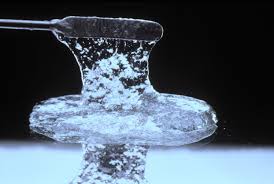Edward G. Loniewski, DO, FACOS, FAOAO

Hyaluronic Acid has been used by orthopedic surgeons since the early to mid 1990’s as a joint lubricant and cushioning agent. Hyalgan™ was the first hyaluronic acid product approved for osteoarthritis in the United States in 1997 and I was one of the first physicians in the area to take the leap of faith into the realm of orthobiologics to treat arthritis. I was initially interested in hyaluronic acid because I read some articles and textbooks on the structure of cartilage cells and understood this to be a component of an important protein called the proteoglycan which helps make up the extracellular matrix or filler substance between cells mainly cartilage cells. This is the “goo” which keeps our cells together. However, over the years, I have been watching research demonstrating some further interesting properties of hyaluronic acid in the reparative or regenerative properties in our bodies.
Lubricating and Cushioning

Not only was hyaluronic acid important in maintaining the cartilage cell matrix, it was also important to maintaining the lubricating properties of our joints. Hyaluronic acid along with Lubricin (rightly named) are mainly responsible for the lubricating properties of the synovial fluid within your joints. Hyaluronic acid also helps maintain the hydration or resilience of cartilage cell by binding to the proteoglycan of the cartilage cell to help the cell hold onto its water content under pressure providing a cushioning effect to the cell.
Wrinkles and Wound Healing

Hyaluronic acid is used as an FDA approved skin filler to temporarily reduce the appearance of wrinkles in your skin. Products such as Restylane™, Belotero™or Juvederm™ have been used by dermatologist to help restore the resilience, hydration and texture of skin with injectable hyaluronic acid for years with a very good safety record and at least temporary good results. Not only can this help with wrinkles, but also with skin and wound healing. Hyaluronic acid can help with attracting new cells into an area of injury such as new skin (keratinocytes) as well as helping to protect cells from ultraviolet damage by producing more retinoic acid (vitamin A) and keeping the cells hydrated.
Cell Migration and Inflammation

Cells need to move into an area of damage to help with the repair process. This is first initiated by an injury or inflammation to the area. Hyaluronic acid helps to initiate this inflammatory event by sending out the “help signal”, but quickly switches to reduce the inflammation and start the healing process. Important biochemical signaling in the healing process called cytokines are stimulated by hyaluronic acid to help form an initial inflammatory tissue response called granulation. But, it also helps control this inflammatory response through helping to clean up the damaged area of free-radicals and stimulating a fibrin clot which helps slowly release the healing growth factors found in platelet rich plasma ( PRP). Thus, not only does hyaluronic acid help initiate the “cry for help” in the injured area, it quickly helps initiate the healing response by helping the important growth factors found in platelet rich plasma stay in the area of damage and start the repair process.
These properties of hyaluronic acid makes this treatment a very good therapy for regenerative medicine, especially when it is combined with other treatments such as platelet rich plasma ( PRP). We have developed a very low cost, safe and effective method we call Enhanced PRP where we customize a platelet rich plasma preparation from your own blood containing some very helpful growth factors and mix this with hyaluronic acid (HA) to provide a superior regenerative product to either given alone. This is called a synergistic effect. Peer reviewed, placebo controlled studies have demonstrated that not only can this provide superior pain relief and restoration of function for over a one year period, this therapy can actually help heal common tendon tears of the shoulder.[1] The best part, is that is safe and very affordable. Most insurance carriers cover hyaluronic acid and our enhanced PRP combination therapy may be covered with a health spending account.
If you would like a personal face to face consultation, please feel free to call 810-299-8552 or click HERE to register on-line.
Remember...These are Your Cells for Your Healing.
[1] Cai YU, Sun Z, Liao B, Song Z, Xiao T, Zhu P. Sodium Hyaluronate and Platelet-Rich Plasma for Partial-Thickness Rotator Cuff Tears. Med Sci Sports Exerc. 2019;51(2):227–233. doi:10.1249/MSS.0000000000001781


